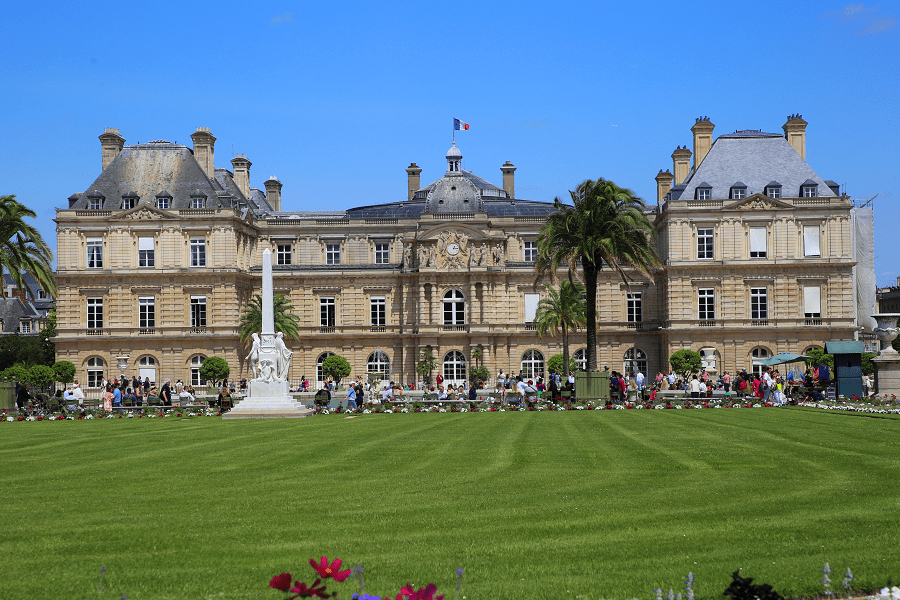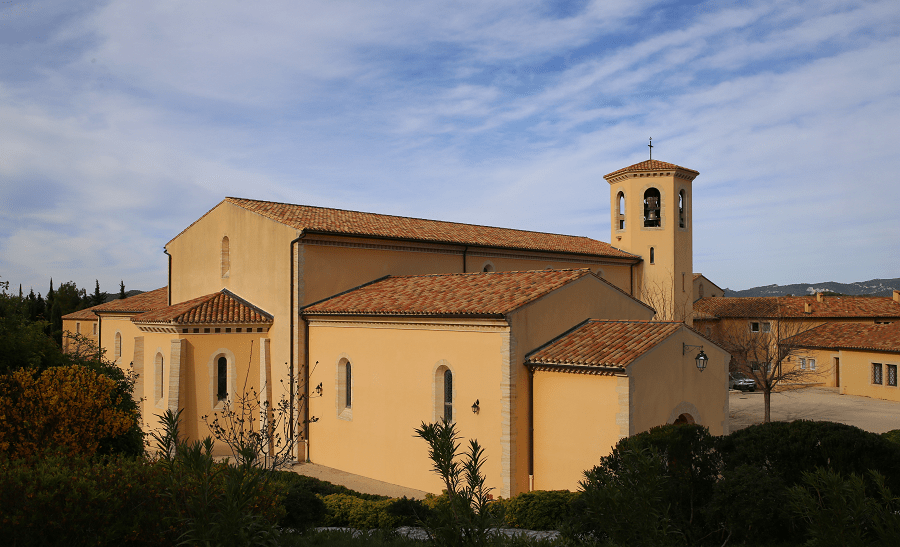The Luxembourg Palace (Palais du Luxembourg) is at 15 Rue de Vaugirard in the 6th arrondissement of Paris (France). It was originally built (1615–1645) to the designs of the French architect Salomon de Brosse to be the royal residence of the regent Marie de’ Medici, mother of King Louis XIII. After the Revolution it was refashioned (1799–1805) by Jean Chalgrin into a legislative building and subsequently greatly enlarged and remodeled (1835–1856) by Alphonse de Gisors.
The palace has been the seat of the upper houses of the various French national legislatures (excepting only the unicameral National Assembly of the Second Republic) since the establishment of the Sénat conservateur during the Consulate; as such, it has been home to the Senate of the Fifth Republic since its establishment in 1958.
Immediately west of the palace on the Rue de Vaugirard is the Petit Luxembourg, now the residence of the Senate President; and slightly further west, the Musée du Luxembourg, in the former orangery. On the south side of the palace, the formal Luxembourg Garden presents a 25-hectare (62-acre) green parterre of gravel and lawn populated with statues and large basins of water where children sail model boats.
Palais du Luxembourg tours are organised on Mondays and Fridays, provided that the Senate is not in session, for a maximum of 40 people. Open for the European Heritage Days during the 3rd weekend of September.
Senate
The Senate is the upper house of the French Parliament, with the lower house being the National Assembly, the two houses constituting the legislature of France. The French Senate is made up of 348 senators (sénateurs and sénatrices) elected by part of the country’s local councillors (in indirect elections), as well as by representatives of French citizens living abroad. Senators have six-year terms, with half of the seats up for election every three years.
The Senate enjoys less prominence than the first, or lower house, the National Assembly, which is elected on direct universal ballot and upon the majority of which the Government has to rely: in case of disagreement, the Assembly can in many cases have the last word, although the Senate keeps a role in some key procedures, such as constitutional amendments and most importantly legislation about itself.
Bicameralism was first introduced in France in 1795; as in many countries, it assigned the second chamber with the role of moderating the first, although for a long time as an ally of the executive. The present selection mode of the Senate dates back to the start of the Third Republic, when it was turned into what Léon Gambetta famously called a “grand council of the communes of France”. Over time, it developed a sense of independence as a “guardian of the institutions” and “guardian of liberties”, favoured by the fact that senators are on average older than members of the National Assembly, and join the house in the last part of their career. Debates in the Senate tend to be less tense and generally receive less media coverage.
As a result of its election relying on what is often summed up as rural mayors, it has had a right-wing majority since 1958, with only a three-year exception in 2011–2014. The left has historically opposed the very existence of a second chamber, while the right defends it, and controversies over the Senate’s role are revived from time to time. The common phrase “a Senator’s pace” (un train de sénateur) mocks the upper house’s perceived slow rhythm and readiness to let new legislation die.
The president of the Senate is to step in as Acting President of France in case of an incapacitation or a vacancy, which last happened in 1974. The current officeholder is Gérard Larcher. The Senate is housed inside the Luxembourg Palace in the 6th arrondissement of Paris. It is guarded by Republican Guards.
See more:













